The first time the words “A Hideo Kojima Production” popped up during the opening credits of Death Stranding, I merely greeted it with a raised eyebrow. It’s always struck me as a particularly pretentious thing to try and put your own name front and centre on a game that’s been produced by a team of hundreds, but it’s also par for the course from Kojima at this point. I let it go.
The second time the words “A Hideo Kojima Production” popped up during the opening credits of Death Stranding, I did a bit of a comical double-take. Hadn’t he already told me this was A Hideo Kojima Production? Maybe it was a bug. Surely the man’s ego couldn’t be large enough that he’d put his name on it twice1.
The third time the words “A Hideo Kojima Production” popped up during the opening credits of Death Stranding, my eyes rolled back so far in my head I think I caught a glimpse of my brain.
But the thing is, Death Stranding, more than any other game before it, is A Hideo Kojima Production. It is the natural result of Kojima, liberated from his Konami overlords at last, being handed a huge sack of cash by Sony and being told to go off and make whatever he wants with zero creative oversight, and so he’s gone and made the most Kojima game ever. If you’re unaware of Kojima’s MO, he’s been shackled to the Metal Gear Solid franchise for the better part of three decades and so his games are usually one part military stealth ‘em up with gadgets, one part highly unorthodox and imaginative gameplay systems in places where you don’t expect to see them (like turning a large part of Phantom Pain into Mercenary Pokemon), and one part interactive drunken shitpost with numerous cutscenes that can sometimes be hours long. Being free of Metal Gear means that he doesn’t have to do the military stealth ‘em up quite so hard any more, and so Death Stranding dials up the drunken shitposting element to almost unbearable levels, but by way of compensation you get one of the most unusual AAA games of this generation next to Sea Of Thieves. That’s always been the Faustian bargain you make when you buy any Kojima game, of course, but it’s never been more true than with Death Stranding.
Death Stranding takes place in a tiny, post-apocalypse version of America that for some reason looks like Iceland now. It’s several decades after the titular Death Stranding, an event which has basically fucked up the afterlife for everyone; now, when people die, their spirits cannot move on to wherever they should be going and instead manifest themselves on the physical plane as angry ghosts called BTs. BTs infest the surface world, along with a phenomenon called timefall which is essentially acid rain that rapidly ages anything it touches. Heavy BT presence is heralded by heavy timefall, and BTs are extremely dangerous since they’ll try and feed you to a big BT if they catch you, and the big BTs are made of antimatter. This causes a gigantic explosion called a voidout, and multiple voidouts have caused the USA to collapse. The survivors have retreated to sealed underground shelters and do not venture outside for fear of being caught by BTs, timefall, or both.
Most of the survivors, anyway. The exceptions are the porters, high-tech deliverymen who brave timefall, angry ghosts, cargo-stealing bandits, life-stealing terrorists, inclement weather, waist-high snowdrifts, extremely deep rivers and inconvenient mountains to ensure that your Amazon package is delivered on time, this being the only form of physical contact that remains possible in the post-apocalypse. You are one such porter: Sam“Porter”Bridges, first seen in the game’s intro screwing up a delivery by driving his bike off of a cliff, but who gets a lot better at it the moment you assume control because he acquires a set of Videogame Protagonist powers that aren’t available to other porters. He has a condition called DOOMS that allows him to sense when BTs are nearby, and he’s also a “repatriate”, meaning that he can resurrect himself after being killed by just about anything, even a voidout. Shortly after the game starts his blood turns out to be toxic to BTs for some reason, providing him with a whole selection of blood-based weaponry that he can use against them. Sam Bridges starts the game as a functional immortal with a built-in set of extremely convenient solutions to the worst of the apocalypse’s problems, but that’s not even close to the most ridiculous thing about him.
For example, did you know that Sam also happens to be the adopted son of the President of What’s Left Of The United States?
Death Stranding’s writing is, as stated in the opening paragraphs, absolutely wild. That’s par for the course for Kojima; what’s unusual about it this time is that while much of the backstory and the game’s plot is the standard Kojima-brand incoherent bullshit, the cast of characters and Sam’s interactions with them stand as a more deliberately calculated challenge to the player’s implausibility circuits. The second character you meet is called Deadman. He’s a former mortician who has replaced bits of his body with cadaver parts. Later on you meet Heartman, a man who wears a defibrillator over his heart because he has a cardiac problem2. The person in charge of a wind farm is called Jake Wind. The guy at the weather station is called Alex Weatherstone. I’ll leave it to you to figure out why the character “Die-Hardman” has the name he does, but he’s effectively the Vice President and he wears an extremely ostentatious skull mask that completely hides his face and nobody bats an eyelid since this is apparently what passes for normal in post-apocalypse America. Even Sam isn’t immune, as his president mother is called Bridget Strand and his adopted name is Strand and did you know that strand is a word that can have many different meanings, including a rope that connects people? This is a line of dialogue uttered almost verbatim by Sam’s sister, Amelie Strand, although as I peered into her almost-photorealistic eyes during this cutscene I could have sworn I caught a reflection of Kojima hurriedly trying to hide a thesaurus.
It’s not like being called Sam Bridges is any better, anyway, as a bridge is also a thing that connects people. By delivering packages, Sam himself connects people, and he is recruited by an organisation that’s also called Bridges so that he can use his magic delivery powers to connect up the scattered cities of America — they’re called Knots in this game, and a knot is a thing that can be used to connect two other things — and build a new nation by, essentially, installing cable internet in each city and shelter he visits so that people can make holographic Zoom calls to one another. If that weren’t motivation enough, the president dies an hour into the game and Amelie becomes the new president (because it’s hereditary now or something) but she gets kidnapped by terrorists on the other side of the continent. And as it turns out, Sam is a bad enough dude to rescue the president. He just needs to get to her first, by connecting up — and in the process, walking across — all of North America.
Death Stranding is intentionally, absurdly literal. It means exactly what it says, and it’ll say it over and over again until the player gets the point. I am not sure if this is a reaction from Kojima against accusations of his writing being too inscrutable — I doubt it, since Death Stranding’s main plotline is ultimately the most aimless piece of writing he’s ever produced3 — but it’s what makes large portions of Death Stranding feel like playing through a particularly well-crafted, game-length Dril tweet. I don’t remotely mean that as a criticism, either; his Dadaist humour is given full reign here and lends the game an air of silly charm that is sorely needed to counteract the overblown importance attached to the rest of the story. It helps that, once you get past the game’s opening hours, and until you hit the point of no return before the ending, Death Stranding is actually remarkably restrained in its storytelling. Yes, it’s true that there’s no avoiding the usual twenty minute Kojima-brand cutscenes, but any time you take on a plot mission it will take no more than an hour from start to finish and once it’s over you’re free to go off and do whatever you want before taking on the next one. I do have a serious beef with how Death Stranding handles its ending which is something best handled after I’ve explained the game mechanics; most of the time, though, the ability to take frequent breaks from the story prevents it from getting too obnoxious.
So, what is it you actually do in Death Stranding? Well, mostly you deliver packages from point A to point B, picking up an order from a terminal at your starting location and transporting it to the designated destination. At the start of the game Sam has sent his bike over a cliff, and so he starts out having to deliver the packages as any bog-standard human would: on foot, with the delivery strapped to his back, lugging it over in-game miles of treacherous, inhospitable terrain. Aside from your own two feet your mobility tools consist of collapsible ladders you can deploy to climb up and across things — they can be laid horizontally to bridge rivers and chasms — and a climbing anchor with a thirty-metre rope attached to it that you can use to descend cliff faces, and that is it. Even the ladders and the climbing anchors don’t come for free; one fantastic conceit Death Stranding has is that Sam doesn’t have access to the usual otherdimensional Hammerspace that comprises most videogame inventory systems. Instead, every single piece of cargo and equipment that he carries must be physically attached to his body somehow. Sam has a maximum carry weight of around 150 kilograms at the start of the game, and packages also have volume – you can carry twenty small items, or ten medium items, or four large items and so on . Want to take two ladders and two climbing anchors with you on your trip? That’s twenty kilos of your weight allowance and four small packages’ worth of carry capacity gone before you even get to considering the actual deliveries themselves. If Sam is carrying a light load he’s actually quite nimble, skipping over rocks and other minor obstructions and keeping his balance easily. The more things you cram into his backpack, though, the clumsier he gets, moving more slowly, tiring more easily and having to manually adjust his centre of gravity every time he makes a minor turn that causes the leaning tower of packages on his back to sway alarmingly.
This alone makes Death Stranding a very unusual game: it is not a Walking Simulator, but a Hiking Simulator. If you’ve ever been on a multi-day hike you’ll know that it’s one thing to walk twenty miles, but quite another to do it carrying a wardrobe on your back. Plotting your route becomes very, very important, as things we usually take for granted in videogames are transformed into potentially insurmountable obstacles. Take crossing a river, for example; most rivers are fordable on foot, but you’ll have to hold down both mouse buttons to brace yourself against the flow of water while you do it, which drains stamina. Once you’re out of stamina you’ll be swept away. Halting behind a rock which is momentarily breaking the flow will allow you to regain stamina, but such conveniences aren’t always available and you also need to watch out for water which is so deep you’ll instantly be swept off your feet regardless. In short, fording all but the shallowest, narrowest rivers on foot is not something to be done lightly; if it’s wide or deep you’ll ideally want to find somewhere you can drop a ladder to bridge it and cross safely, but then that’s one of your precious ladders gone that you can’t use later. Climbing cliffs is even more dangerous; again, it is possible unless the cliff is completely sheer, but if Sam loses his balance he’ll pitch off the rock he’s trying to clamber onto and — usually — fall backwards onto his back, which also happens to be where all of his precious cargo is.
This has a number of undesirable effects. First is that the packages will scatter away from you and you’ll have to go and pick them up again, which is potentially dangerous if they’ve scattered off a cliff or into a river. Second is that the packages themselves will be damaged, and damaged packages result in a smaller reward on delivery; if the damage reaches 100% the package will be rendered undeliverable. Finally Sam will take damage if he’s falling from a great enough height, but this, oddly, is the least of your worries thanks to how Death Stranding handles player health — more on that in a moment. I never worried about Sam getting hurt or dying on my travels, because it never happened, but I was terrified of getting myself into a position where my cargo would take serious damage. The game gives you plenty of tools to stop this from happening, chief of which is a scanner ping that highlights how dangerous terrain is; blue is relatively flat and safe, yellow is steep and rough and will sap your stamina at the very least, while red essentially denotes Trip Hazards. You path around the red spots on the ground if you know what’s good for you, just like you use ladders and climbing anchors to cross and climb things safely without risking a damaging fall or being swept away by a river current. Death Stranding does a great job of communicating the weight of Sam’s cargo as he has a great deal of momentum when fully loaded up and can’t turn or stop quickly, so if you see an obstacle coming up you need to react before you get to it so that you have time to adjust your route. Often it’ll mean stopping and picking your way around it slowly and carefully. Carrying heavy cargo loads for prolonged periods gradually decreases Sam’s maximum stamina cap, too, and not only is this dangerous as it means you have lease breathing room when climbing and crossing rivers and so on, but once it’s dropped about two-thirds Sam will have to stop for a rest – and just like the cargo weight, I’ve not seen a game portray just how utterly exhausted you can be after a day of carrying it quite as well as Death Stranding.
This makes the opening hours of Death Stranding a very slow and deliberate experience, and one which might turn off anyone used to the usual power fantasies that most modern open world games provide. The game makes you transport stuff on foot for just long enough that you appreciate both the detailed mechanics in place around it, and so that you start to get a little bit sick and tired of how much faff it is. One open world concept that Death Stranding does grasp very well, though, is that once mastery of a thing has been displayed the game should start to offer conveniences that remove many of the basic headaches involved and eventually automate them away entirely. In its most basic form this is achieved via a little piece of equipment called a PCC, which can be used to construct large permanent structures in the game world that help you along your way. You can use a PCC to build bridges, watchtowers, power generators and rest points, all of which serve to smooth your progress through the world just a little bit. After a few hours of walking you get a replacement bike, which further simplifies matters as while the bike isn’t capable of carrying much additional cargo (and will move a lot slower if Sam himself is carrying a heavy cargo load) you don’t need to worry about keeping your balance while you’re sat on it; it’s also faster than travelling on foot and capable of handling surprisingly rough terrain if you’re willing to Skyrim yourself up the occasional slope. If there’s terrain that the bike can’t cope with, though, the next thing that Death Stranding offers up are a selection of powered exoskeletons that allow Sam to move more quickly and easily over difficult areas such as rocks and snowdrifts while carrying heavier loads. Eventually you unlock a truck, which is neither fast nor rugged but which can carry truly ridiculous amounts of cargo and which is a hard requirement for building the static highways that link up the game’s main destination nodes.
And once you’ve gotten that far the game has essentially morphed from a Hiking Simulator into Truck Simulator; Death Stranding does introduce a fast travel system about ten hours in, but unlike most open world fast travel systems this one comes with the drawback that you can’t take any cargo or equipment along with you. Since Death Stranding is a game about making deliveries this is a decidedly suboptimal mode of transport unless you really want to get somewhere fast to do a plot mission, and anyway if you’ve been playing the game right you’ve been setting up the infrastructure required to make repeat trips along the same routes much much easier. Travelling to a new destination for the first time has a great pathfinder feel to it, as you travel across unknown terrain and brave unknown hazards with only the equipment you’re able to carry on your person4. Once you know the route and the terrain it’s worth loading up on PCCs and doing a dedicated infrastructure building trip to connect the new location to your transport network, and once that’s done you can repeat a trip that took you twenty or thirty minutes to cover on foot in a tenth of the time. Travelling across the length of the map can still take a little while, even when using a bike on a highway, but Death Stranding rarely asks you to travel that far, preferring to divide its delivery destinations into distinct regions that rarely intersect with one another. As a result I never once used Death Stranding’s fast travel system, preferring to enjoy the fruits of my infrastructure-building labours and making a few optional deliveries along the way.
What does making deliveries get you, though? Well, you may not “like” the answer: deliveries are paid for in social media-style “Likes”, which are apparently the only form of currency in a world where anything can be 3D printed on demand. Likes are tracked on two levels: the Likes you get from the individual representatives living at each specific city or bunker you visit, and the overall total Likes accrued by Sam throughout the game. Individual Likes are used to level up your Connection with that location which eventually unlocks a new piece of equipment or an upgrade if you get it high enough, while overall Likes give you passive upgrades to basic abilities like being able to carry more cargo, packages taking less damage when you drop them and so on. The equipment you can unlock is reason enough to take on optional deliveries to specific destinations, either in the form of Standard Orders from city terminals or else just by finding lost cargo randomly strewn about the world and delivering it to its intended recipient; once you’ve maxed out your Connection stat with them there’s unfortunately not really much reason to keep delivering stuff to them, but that’ll take a good few deliveries and there’s a lot of locations in this game so it’s not really that much of a problem.
The really interesting thing about the Likes, though, is how it ties into the passive social aspect of Death Stranding. Remember how in Dark Souls other players could make signs that give hints about upcoming areas and bosses, and how these signs could show up in your game world? Death Stranding takes that idea and expands on it hugely; once you’ve travelled to a destination for the first time and hooked it up to the Future Internet, other players’ structures and vehicles will appear in that region for you to use. This includes everything from ladders and climbing anchors to bridges, trucks and even the occasional highway. It’s very cool to be attempting to climb some mountain so that you can drop a zipline with good line-of-sight to the surrounding area and come across a pair of ladders dropped by another player who was thinking the same thing, greatly simplifying your ascent. It’s similarly very cool to be able to piggyback off of other people’s power generators for recharging your bike, or to come across a truck in the wilderness when your exoskeleton is almost out of power. Having other people’s infrastructure appear in game like this is also useful because the total number of structures that you personally can build in the game world is capped; the cap slowly rises as you connect more regions up to the network, but structures that have been built by other players do not count against the cap, so the more of their existing infrastructure that you can usefully leverage the more freedom you’ll have to build new stuff in the places where you actually need it.
And because Death Stranding is all about making connections, each player-built structure that appears in your game has the name of the player who built it attached to it. If you use it you’ll automatically throw them a few Likes, and a message will pop up in their game telling them that someone used their structure. Similarly everything that you build has the potential to show up in other people’s games, and so every time you boot up Death Stranding you’ll get a bunch of messages saying that people used your stuff, and be paid with the associated likes. This is especially true of the highways, which are a colossal pain in the ass to build but which literally everyone who plays the game uses and which can pay out thousands and thousands of Likes for a single segment. Despite being effectively meaningless after a certain point it’s still a powerful dopamine hit to see that the things you built helped out other people, even to an old curmudgeon like me who purposely avoids all real-life social media. This also extends to lost cargo appearing in the game that you can deliver on behalf of other players, where each delivery summary pops up the avatar of the player you delivered it for, with occasionally hilarious results. Death Stranding even includes a section in the end credits for all of the players whose structures appeared in your game. The one thing you can never say about Kojima is that he doesn’t commit to a theme; if he’s making a game about making connections, then goddammit, everything in that game will be about making connections even if he ends up having to beat you over the head with them.
(There is a darker side to all of this, of course: this passive social side of the game is something that has clearly been designed for the PS4 multiplayer ecosystem where users can only choose from a selection of static avatars and where usernames are filtered and policed for offensive content. Zero effort has been made to adapt it to Steam, where users can have any username and any avatar; on the avatar front I was somewhat surprised that my “Time To Anime Boobs” counter never expired, but I saw more than one player name that contained racist and sexist content. I really think even a primitive word filter that prevented players with offensive usernames from having their structures appear in your game would have gone a long way.)
The transportation and delivery side of Death Stranding is, as stated, very cool. It’s the most unorthodox part of the game in terms of gameplay mechanics, and is the part of it that absolutely sticks the landing even if it is going to be an acquired taste for more than a few people. It helps that the Decima engine makes everything look absolutely incredible, both in terms of the landscape and the various characters inhabiting it. Yes, it is a bit weird that North America now not only looks like Iceland but has shrunk to a fraction of its original size (you can drive across it in ten minutes if you have your highway network built up), but the terrain is nicely varied without falling into the trap of having overly distinct biomes, and the volcanic nature of it makes it feel quite unlike your typical open world game. I’ll spare a word of praise here for the fidelity of the character mocap and facial animations, too; usually this kind of thing doesn’t impress me, but I think Death Stranding is the first game I’ve played where I’m not going to argue with casting Famous Actors (well, semi-famous actors anyway) like Norman Reedus, Lea Seydoux and Mads Mikkelsen because the technology is finally capable enough for their physical performances to actually come across in-game. There’s rather too much actual stunt casting in the game for my tastes — the likenesses of PR hypeman Geoff Keighley and coiffured meat-puppet Conan O’Brien show up as shelter occupants, which was incredibly jarring — but Death Stranding even manages to make that work on occasion, as directors Guillermo del Toro and Nicholas Winding Refn are used for the likenesses of Deadman and Heartman (with actual professional actors doing the voices and mocap) and you simply forget it’s them after a while. Weirdly the weakest link in the main cast is longtime videogame voice actor Troy Baker, and it’s not particularly his fault or the fault of the technology, either; it’s just that he’s playing a really shittily written Kai Leng-tier villain character. And even he manages to inject a little bit of fun into it thanks to the mocap. I was expecting it to be really gimmicky, but instead the use of live actors for the cutscenes ends up being the second strongest part of the game.
I just wish I could say the same for Death Stranding’s combat.
First of all, I’m disappointed that Death Stranding has combat. One of the really interesting things about its premise that is death and killing are decidedly bad activities to be engaging in, which is very unusual for a AAA videogame. If you kill someone in Death Stranding, a BT will be created shortly afterwards. If the BT manages to get hold of its corpse — and BTs are drawn to the corpses that created them — it’ll cause a voidout. This is not just something that happens in cutscenes or backstory, either; if you accidentally kill a bandit by backing over them with a truck you have a short period of time to get the corpse to an incinerator and safely dispose of it before it explodes, permanently scarring the landscape with an enormous crater. Sam’s own deaths are more leniently handled, but he’ll still cause a voidout of his own if he gets eaten by one of the larger BTs. Voidouts do eventually repair themselves — thanks, timefall! — but setting off a mini-nuke in the middle of your hard-won transportation infrastructure is still a very inconvenient negative consequence for killing someone.
Consequently the first weapons you get in Death Stranding are focused around disabling enemies instead of killing them. Enemies are split into two types: BTs, and rogue groups of humans who are portrayed as ex-porters who have become addicted to hoovering up those sweet sweet delivery Likes and will attempt to steal your cargo so that they can deliver it themselves. The latter group initially come after you with shock spears that can disable vehicles and stun you before they engage in hand-to-hand combat; later they get access to a grapple that can yank the cargo straight off your back. Your response is a bola gun that’ll tie them up helplessly; they’ll free themselves after a while, but this is why you spend a few seconds going around and kicking people in the nads after they’re disabled so that they don’t get up again. You also get smoke and stun grenades, a rope that’s used as a melee takedown weapon — the game calls it a strand, and did you know that the word strand has multiple different meanings? — and, as a last resort, your own fists. But none of the weapons you have are lethal, and none of the weapons they have are lethal; if they catch you and you lose the ensuing combat they’ll just knock you out and steal your cargo. And if that happens you can always gear up for round two and steal it back.
BTs are a whole other ballgame. You can’t even see BTs normally, despite Sam’s magic DOOMS senses; instead you need the help of a baby in a flask that’s strapped to his chest (one of the least weird things about Death Stranding) and hooked up to his scanner. When you have the baby the scanner arm on Sam’s shoulder will point in the direction of the nearest BT, and it’ll also gyrate with increasing frequency the closer you get to one. They’ll still be totally invisible to you unless you get unhealthily close to one, though, at which point you can briefly render them visible with a scanner pulse. At the start of the game when you don’t have any anti-BT weaponry available your only option is to evade them, and this is an agreeably tense and nerve-wracking experience despite the BTs looking and sounding a lot scarier than they are in gameplay terms; the game will give you several chances to escape if one of them finds and catches you and I think you’d have to work really really hard to actually die to a BT in Death Stranding, but knowing that doesn’t diminish their psychological threat level at all. Several hours into the game you get your first piece of anti-BT weaponry, a “hematic grenade” filled with Sam’s blood that will kill smaller BTs and stun larger ones, but you have to carry the grenades around with you as part of your cargo load and every time you throw one it depletes Sam’s blood supply, which doubles as his health bar. Making player health the same thing as player ammo is one of the really interesting things Death Stranding does, and while you can also bring additional blood bags that automatically refill the health bar should Sam get too low, it’s yet another thing that Sam has to carry on his back.
Up until this point the “combat” system has been perfectly fine and interacts very well with the limited inventory system; the things you use to fight are more tools than they are weapons, and balancing the competing demands each piece of equipment makes on your carry capacity is a captivating problem for, oh, call it the first forty percent of the game. Unfortunately Death Stranding then decides to take things a step too far by introducing actual guns into a game whose entire gimmick up until this point has been about finding unconventional narrative and gameplay solutions to common videogame problems. Predictably enough, the moment you jam guns into this scenario every enemy in the game starts to look like a target – even the BTs, thanks to some technobabble whereby the rounds are coated in Sam’s blood prior to being fired. The first guns you get are lethal against humans, at least, which still leaves you with the sticky problem of corpse disposal should you be unwise enough to actually kill anyone with one, but after a very short period of time you’re given a non-lethal assault rifle that can also fire the anti-BT blood rounds, and this is when Death Stranding’s combat turns into a really really bad third-person shooter because why would I waste inventory space and/or carry capacity on all of these other specialised pieces of equipment when I can take one gun that fixes all of my problems? There’s no depth or nuance to the gunplay whatsoever; the non-lethal rounds behave identically to the lethal ones except your enemies are now loudly snoring after they fall over to indicate their not-deadness, even if they happen to be floating face down in a river at the time. BTs you just shoot until they explode, and you don’t even have to worry about other BTs detecting you because this gun also comes with a built-in silencer.
If the combat has one saving grace it’s that fighting human enemies is usually entirely optional (although knocking over bandit camps is one of the best ways to get materials for highway construction), and BTs come in sufficient numbers that it’s impractical to blow them all up because you’ll run out of bullets before the game runs out of BTs – for some reason you can’t carry additional ammo and must instead carry additional guns if you want more of it, but even if you are lugging around a couple of spares you still can’t take on the entire spirit world and win. The exceptions to this are some truly weird combat sequences that take place as Sam works his way through Death Stranding’s convoluted storyline and is transported into the midst of famous US wars to fight ghost soldiers; these are both baffling and, after the second one turns out to be exactly like the first except in different set dressing, extremely tedious. It’s one of those things that feels like it’s been spliced in from an earlier, more combat-oriented build of the game, which should have been cut but hasn’t, either because of Kojima’s “vision” or because they’d already blown too many resources on the specific war settings to really justify it. So they’re just in there now, cropping up every few hours to make you wonder why Kojima feels it is necessary to make you play a bad third-person shooter every now and again.
By a curious coincidence, “extremely tedious” is the exact phrase I’d use to describe Death Stranding’s ending. Earlier I said that once you get past the opening Death Stranding is curiously reserved in its use of cutscenes – by Kojima’s standards, anyway — and that it’s actually possible to enjoy this one in relatively bite-sized chunks since you can always leave the main story alone to go off and do some side deliveries or build more infrastructure or whatever. It was restrained enough that I even found all of the ridiculous fourth-wall breaking the game does moderately amusing instead of grossly indulgent, even to the point of being able to overlook the ridiculous product placement for Monster Energy drinks and what I assume is a real life brand of beer. For a vanishingly small moment I actually thought Kojima had… well, not quite learned moderation, but at least managed to pace the game so as not to overwhelm the average player’s attention span. I should have known better, though, since it turned out he was just saving it all up for the ending. Like most open world games, Death Stranding has a point of no return past which it’s impossible to do most of the engaging side stuff that’s the actual backbone of the game because you’re being railroaded to the denouement of the story. Unlike most open world games, however, Death Stranding’s point of no return comes six hours before the actual end of the game. These six hours of straitjacketed gameplay contain:
- Cutscenes, obviously.
- A series of increasingly annoying bossfights. It is ridiculous that Death Stranding, a game that has more in common with European Truck Simulator than it does a standard third-person action game, ends with not one, not two, but three bossfights where you shoot a giant BT with a rocket launcher. They aren’t short, either; each one takes a good 10-20 minutes of chipping away at a massively inflated health bar.
- More cutscenes.
- Having walked across all of North America, the game then asks you to walk back across the continent in the opposite direction. It locks off fast travel during this segment, too, so you have to do it the hard way. Of course if you’ve been playing Death Stranding properly you’ve set up a huge infrastructure network that would ordinarily turn this gargantuan undertaking into a ten-minute jaunt along ziplines and highways, so Kojima throws in an additional kick in the nuts by scattering a plethora of additional miniboss encounters in your path, which are only slightly less tedious than the full boss encounters above.
- Even more cutscenes.
- An “interactive” sequence set on a beach where one of the characters slowly walks around you while explaining what the game was actually about. They don’t give you this exposition all at once, either; instead they bugger off for whole minutes at a time while the game credits slowly cycle through in one corner of the screen. Despite having control over Sam during this sequence there’s nothing to actually do here, since there’s nothing to interact with and running too far from the start point results in him being rudely teleported back to it. Eventually the exposition character comes back and spoon-feeds a little more plot to you; this repeats for what was probably around half an hour in real time, but which felt like an actual eternity to sit through. And this is all leaving aside how shitty your story must be if you need to specifically explain it to the player at the end of the game instead of, oh, I don’t know, telling them what was going on while they were playing through it.
- An additional helping of cutscenes.
- A second credit sequence. Wait, didn’t I just sit through this already while Death Stranding was explaining the plot to me in the most boring way imaginable? Yes, but that’s not going to stop Kojima from telling me that Death Stranding is a Hideo Kojima Production several more times, just in case I’d somehow managed to miss it up until this point.
- One last set of ending cutscenes.
- Actually that was a lie, there’s a full half hour of epilogue cutscenes after a short gameplay sequence where you make one last delivery. Unlike the rest of the ending I actually enjoyed this part, though, so I’ll let this single bullet point slide.
After you’ve endured this marathon of bullshit Death Stranding finally dumps you back into the open world again, but by this point all further desire to play the game had been well and truly burned out of me. It’s like a masterclass in how to instantly erase the goodwill you’ve spent the last forty hours slowly and painstakingly building up with the player, and it’s frankly a miracle that I made it to the end at all despite how invested I’d been in Death Stranding up until this point. It truly is the quintessential Kojima game; it’s stuffed with remarkable ideas that will hopefully end up influencing other, better games and which make Death Stranding worth playing simply to see the breadth of its imagination, but it’s also the most bloated and self-indulgent thing he’s ever produced, to the point where it would probably be unbearable if it spread its worst excesses out a little more evenly instead of saving them all up for the last six hours of the game.
The one saving grace — if it can be called that — is that anyone who gets to that point is probably going to be committed enough to endure it to the end, no matter how exhausting it is to do so, but they’re not going to be happy about it. I certainly wasn’t, and it’s a real shame that the last six hours of Death Stranding left me with such a bad taste in my mouth after broadly impressing me for the previous forty. Still, while I am not sure I would call Death Stranding a good game, I certainly found it to be a fascinating one, packing more imagination into a single hour of gameplay than most other AAA titles manage across multiple full iterations. And I’d much rather invest my time into a Death Stranding than a Doom Eternal or a Far Cry, games which are only really interested in repackaging old ideas and selling them to you with a slightly newer coat of paint. Death Stranding at least has the benefit of novelty, of showing me something that I haven’t seen before in videogames, of allowing me to experience something fresh no matter how slow-paced its gameplay is, and that’s something I value quite a lot these days.
- Well, three times, considering the dev studio also has his name on it. ↩
- I’m trying to do this without spoilers so I’m really, really underselling this stuff by leaving out the best parts. ↩
- Including Phantom Pain, which he didn’t even finish properly. ↩
- If you tried it in a truck you’d probably have to abandon it halfway. ↩

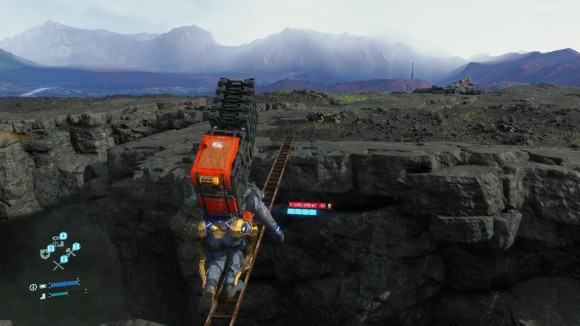
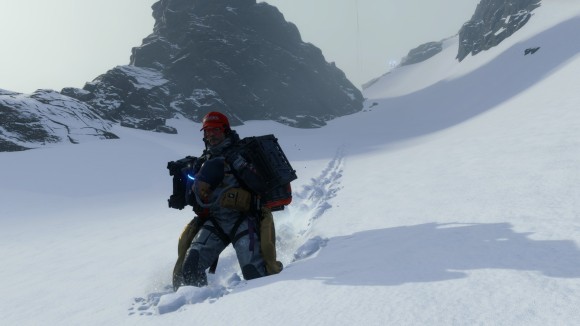
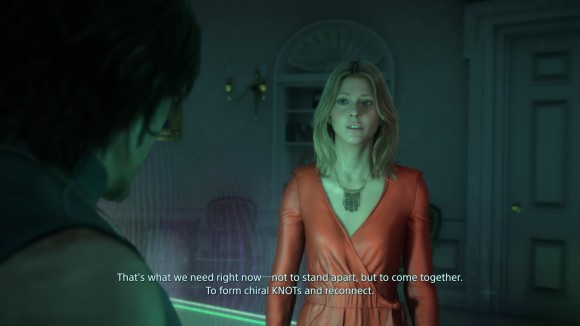
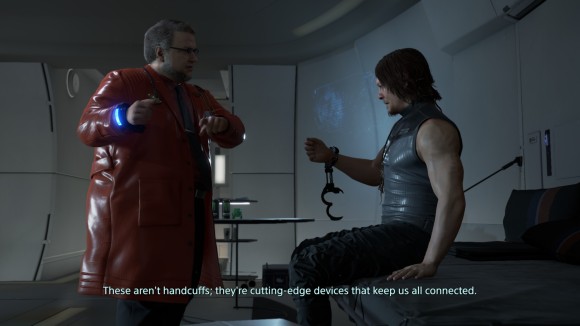
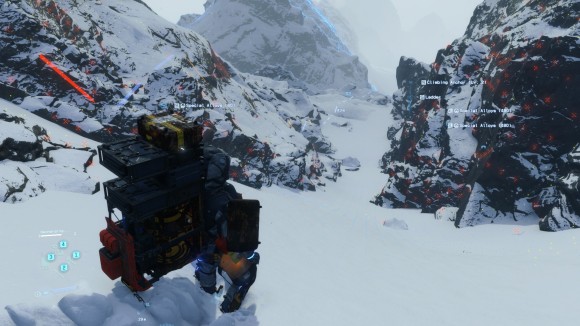
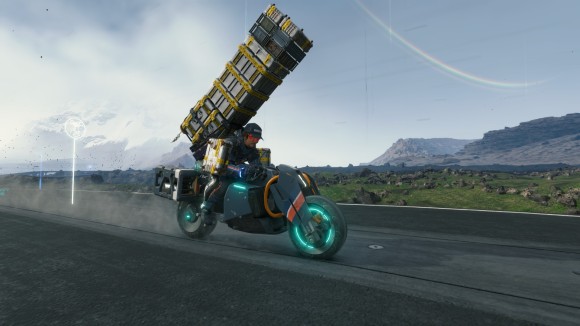
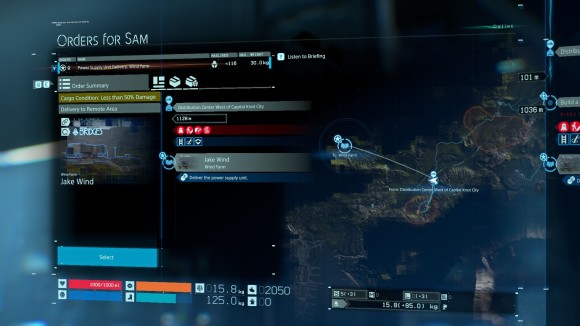
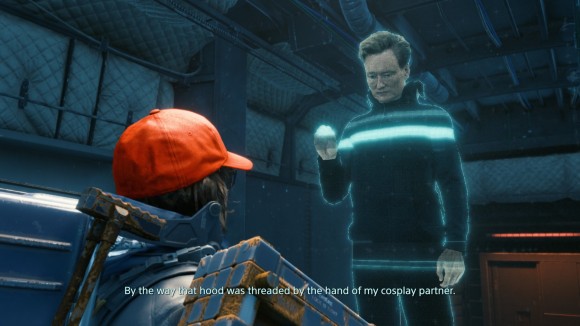
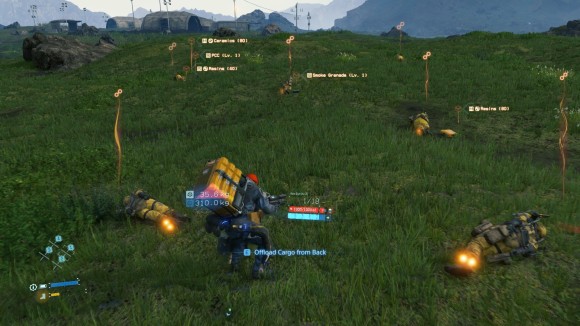
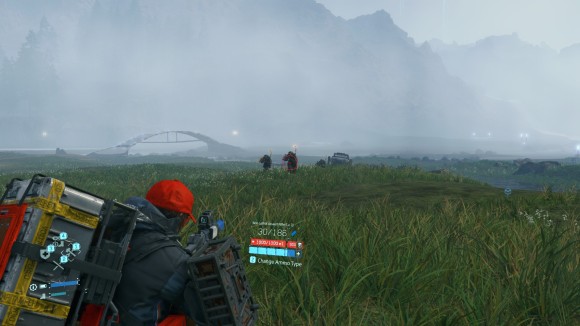
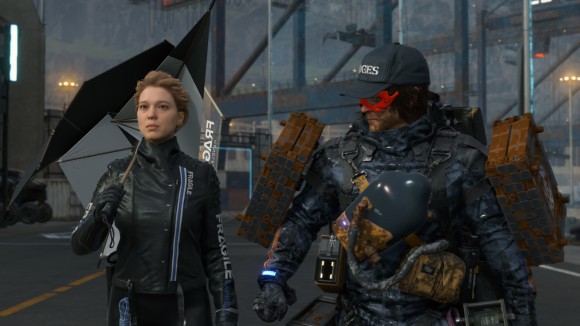
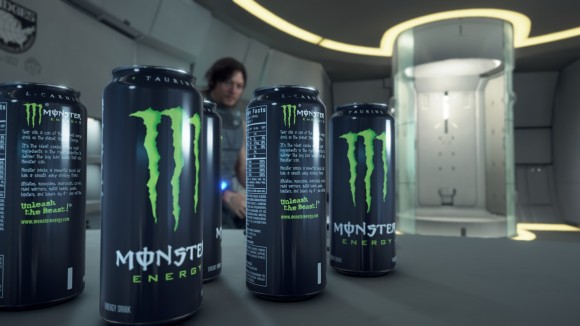
The brilliance of Kojima is not his plots, his character designs, or even his emergent gameplay.
It’s coming up with a game where the primary challenge is figuring out how to walk without tripping over, and getting Sony to give him $100M and Mads Mikkelsen’s phone number.
I am equally fascinated and put off it. Even more so after reading…
But I don’t think I can stomach Kojima’s bullshit, ultimately.
Mgsv has 50 missions, and every mission has a “A Hideo Kojima Production” at the beginning
Glad to see you’re still around!
I’ve become accustomed to this process of organising my thoughts about games via reviewing them and have noticed I remember far less about the ones that I don’t, so while I might leave it for a long period of time because I’m not playing games or just don’t feel like writing about them, I’ll always come back to this blog eventually!
(Well this is exciting, apparently it’s not letting me comment with my user account despite being logged in.)
Hands down the best review of Death Stranding I’ve read. Somehow I want to experience this game now, for better and worse.
Thanks! It’s really difficult to recommend Death Stranding because it’s so weird and different people are going to have very different tolerances for its bullshit. The RRP of £50 is quite a large punt to take on a game that’s largely experimental, and whose experiments don’t always work out. I imagine it’ll be 50% off this time next year though, and £20-25 is my personal “Eh, what the hell,” threshold.